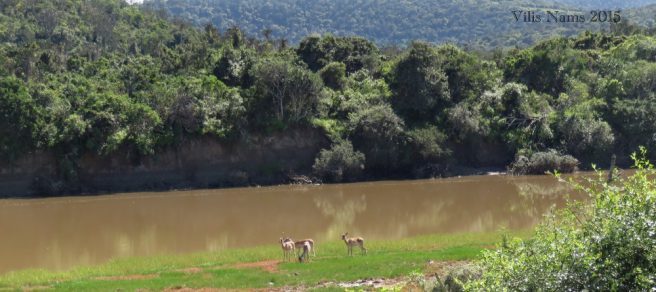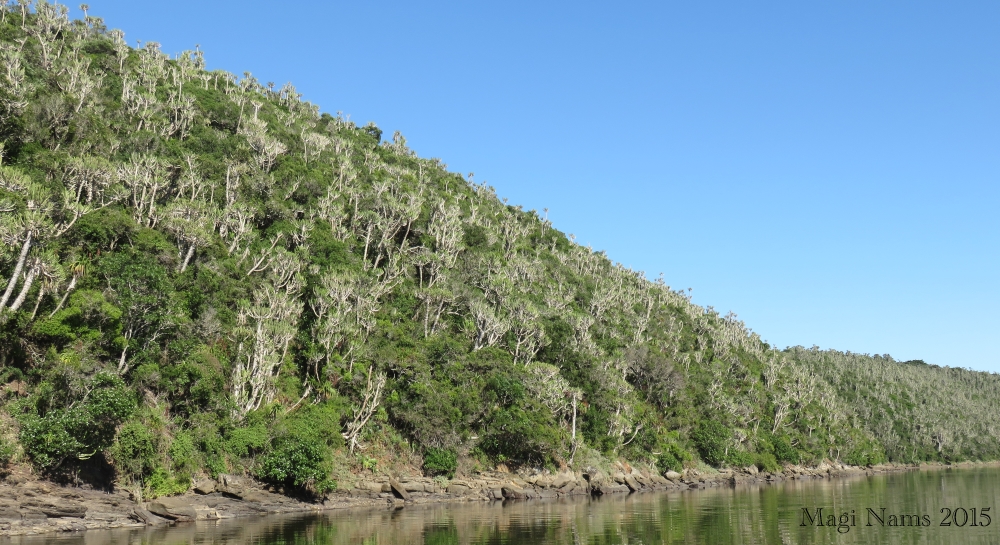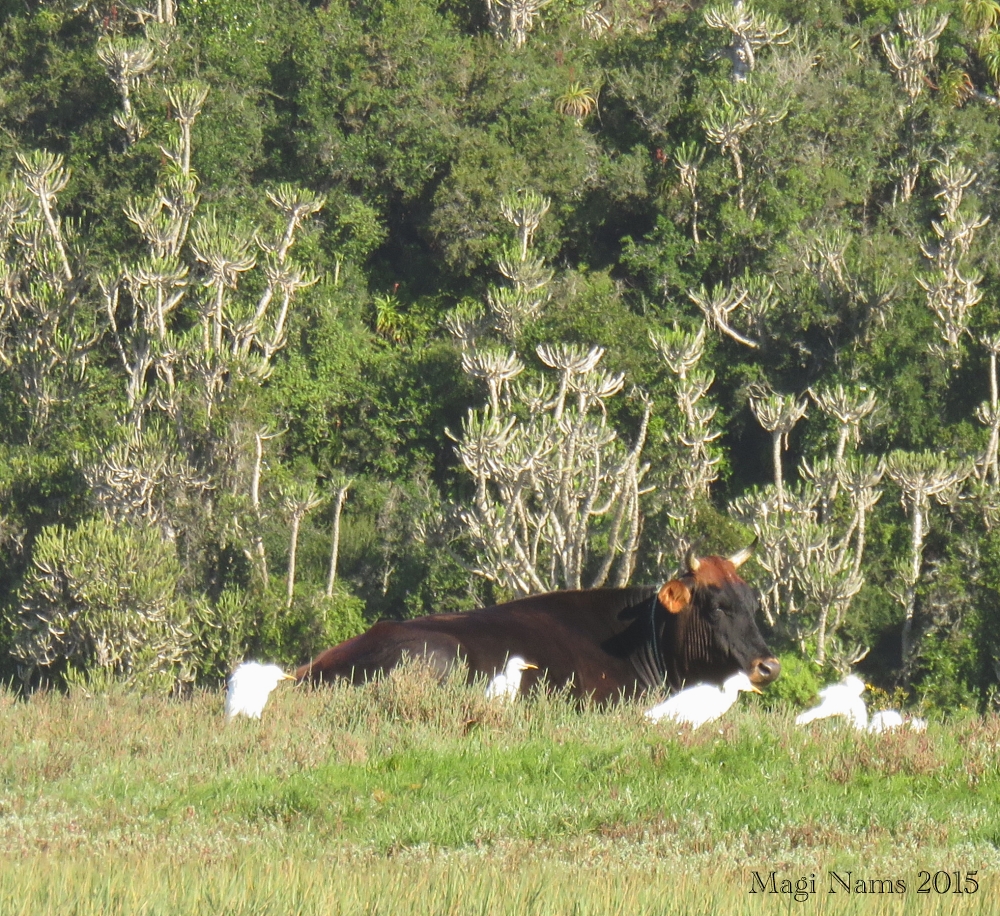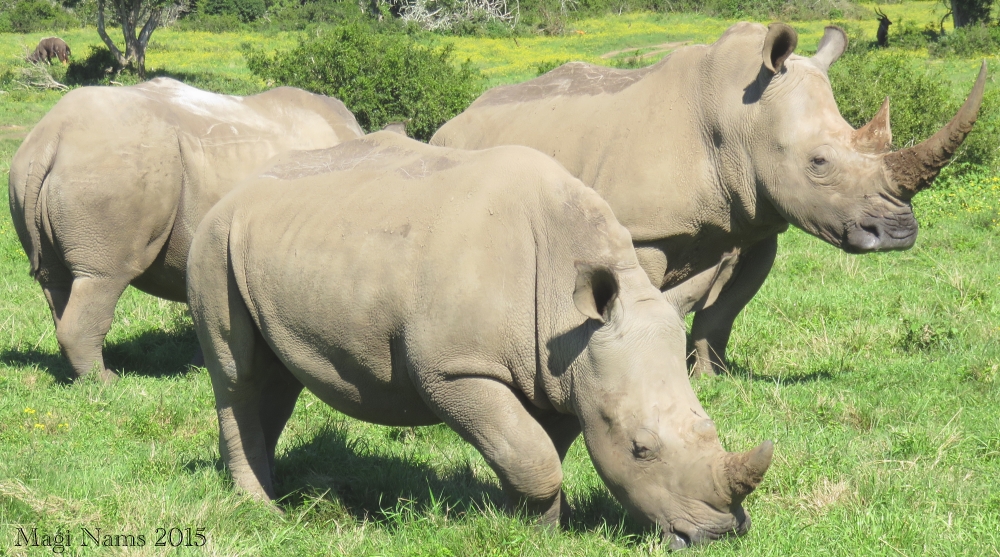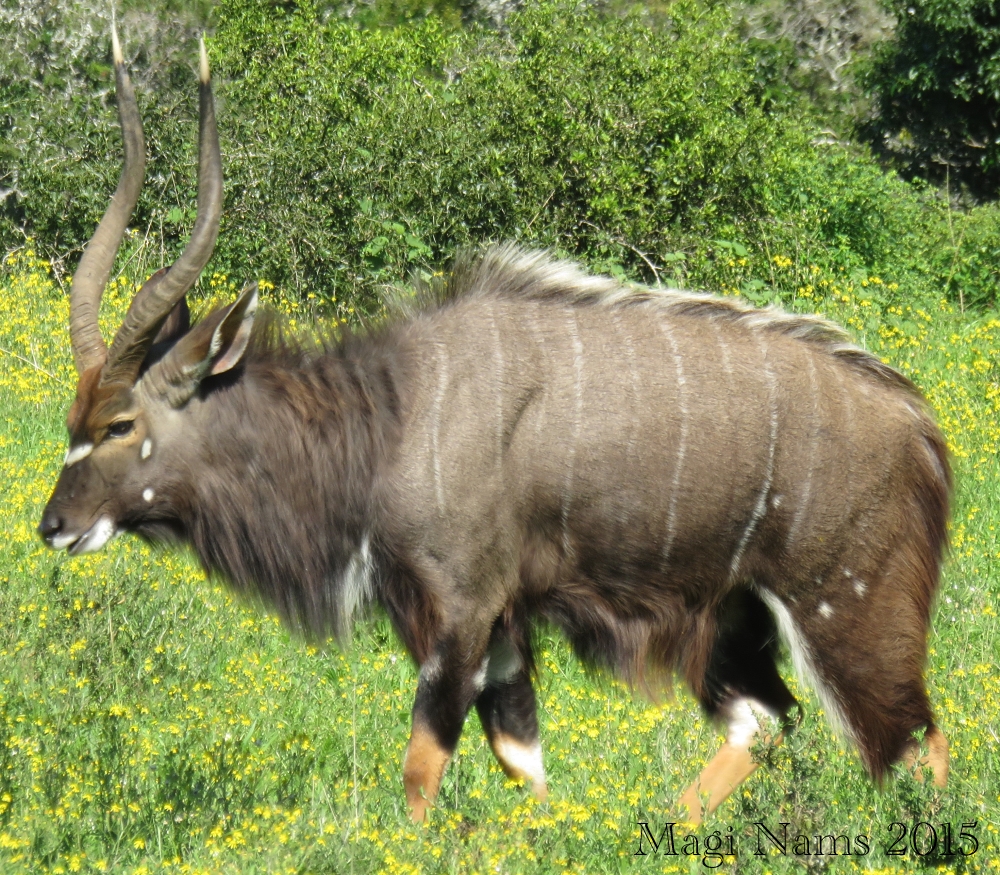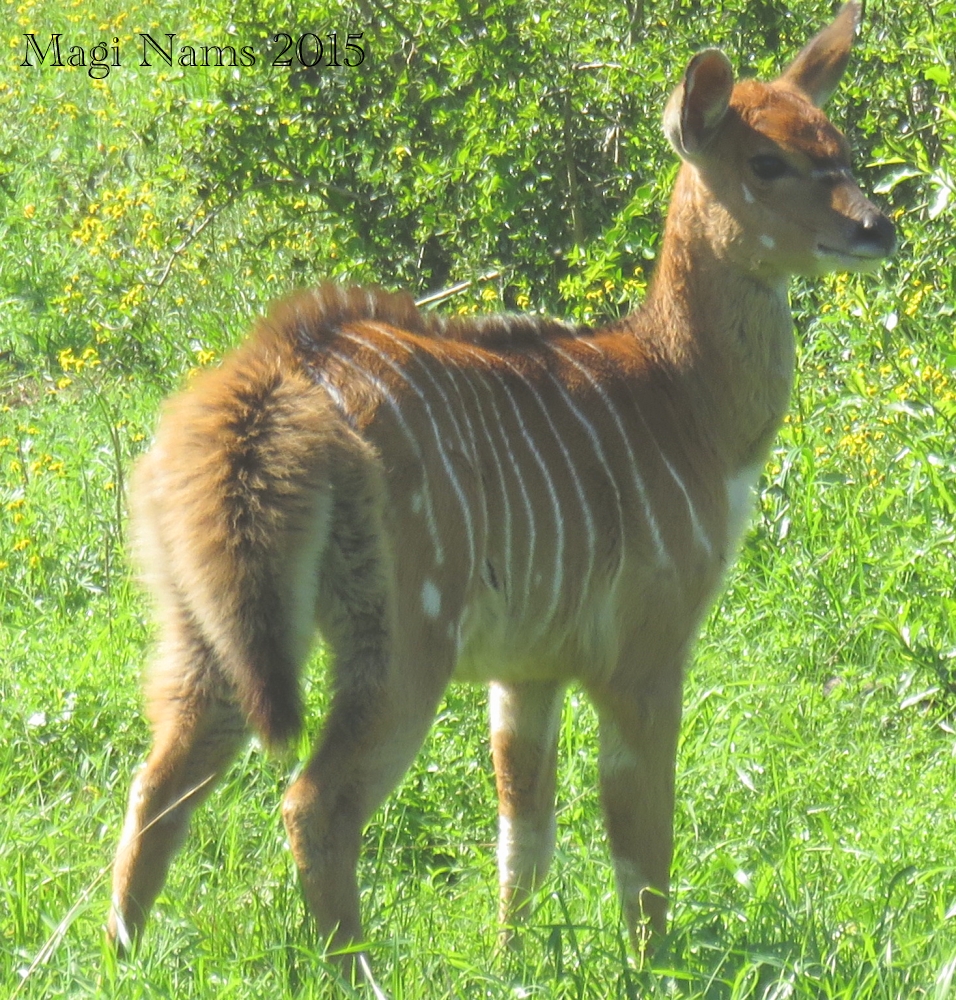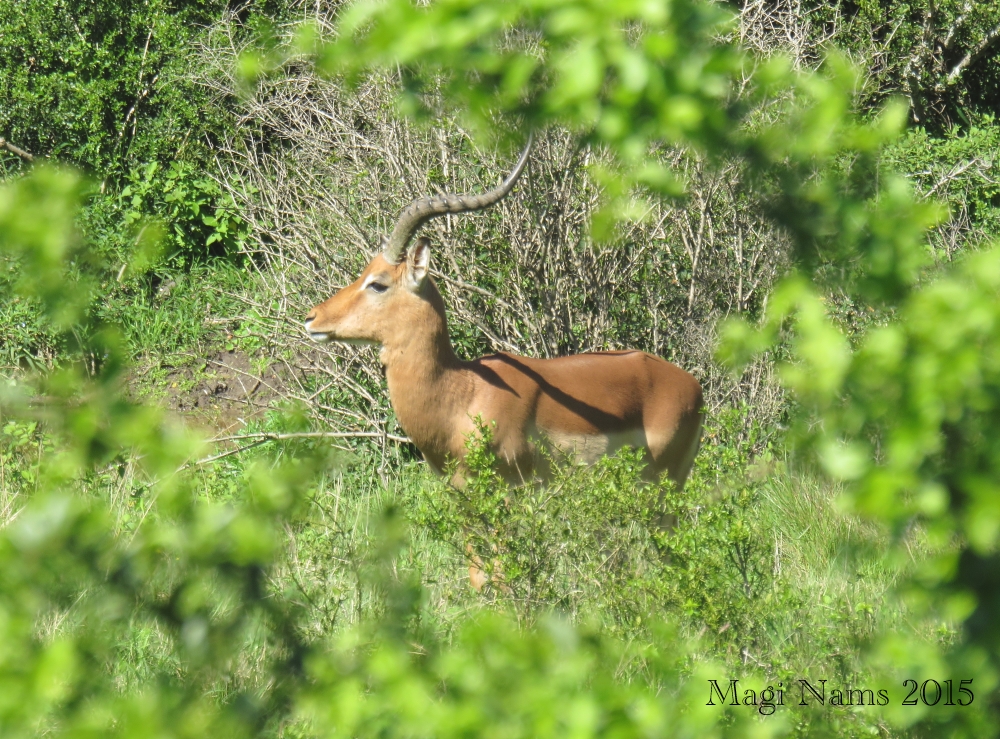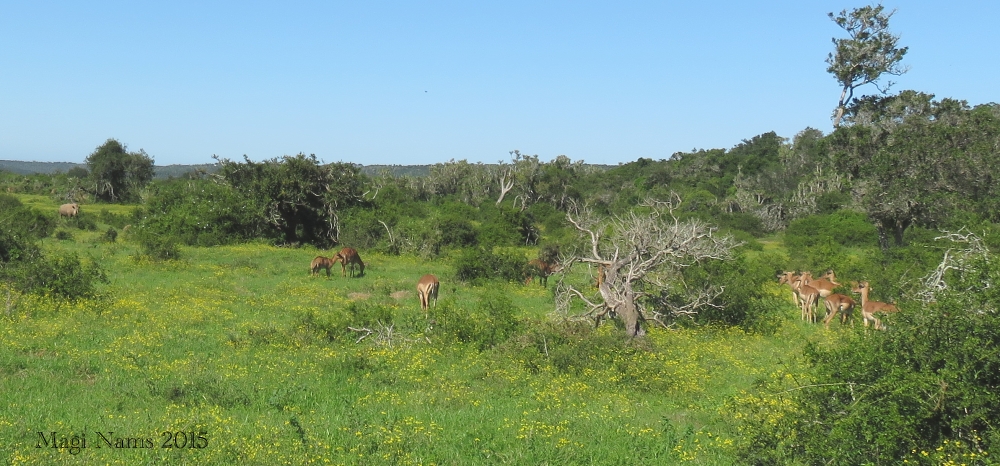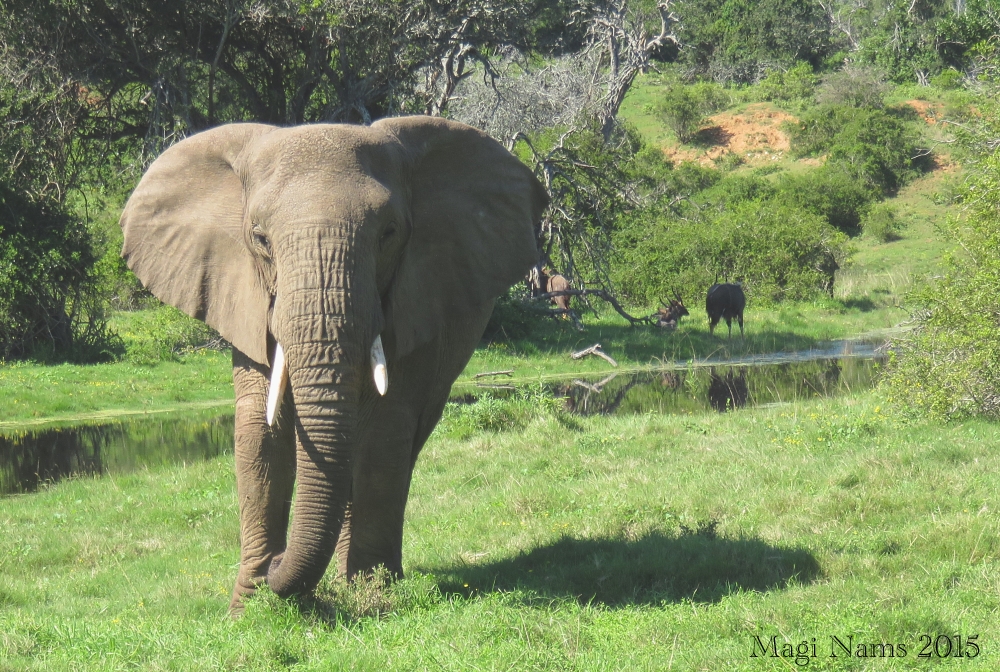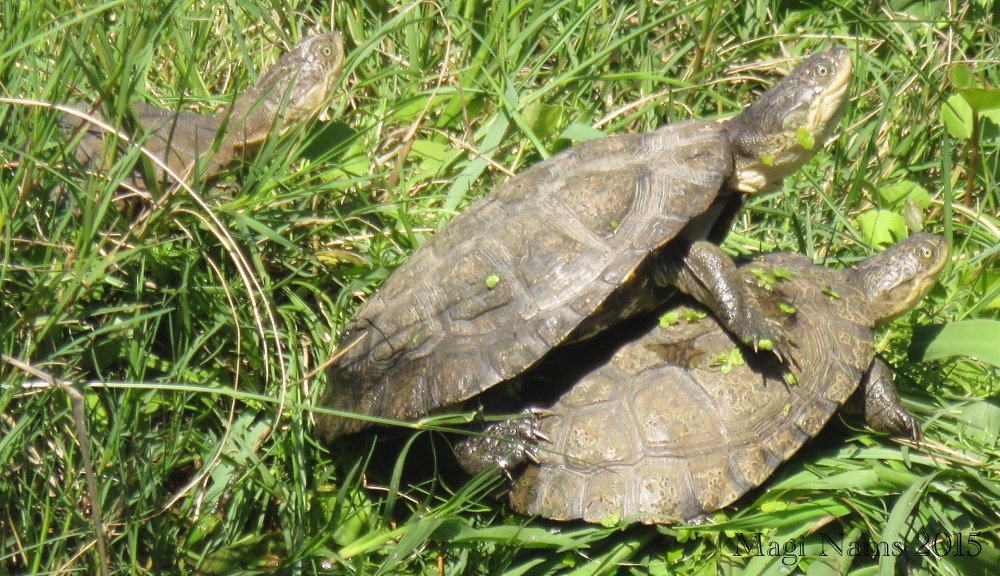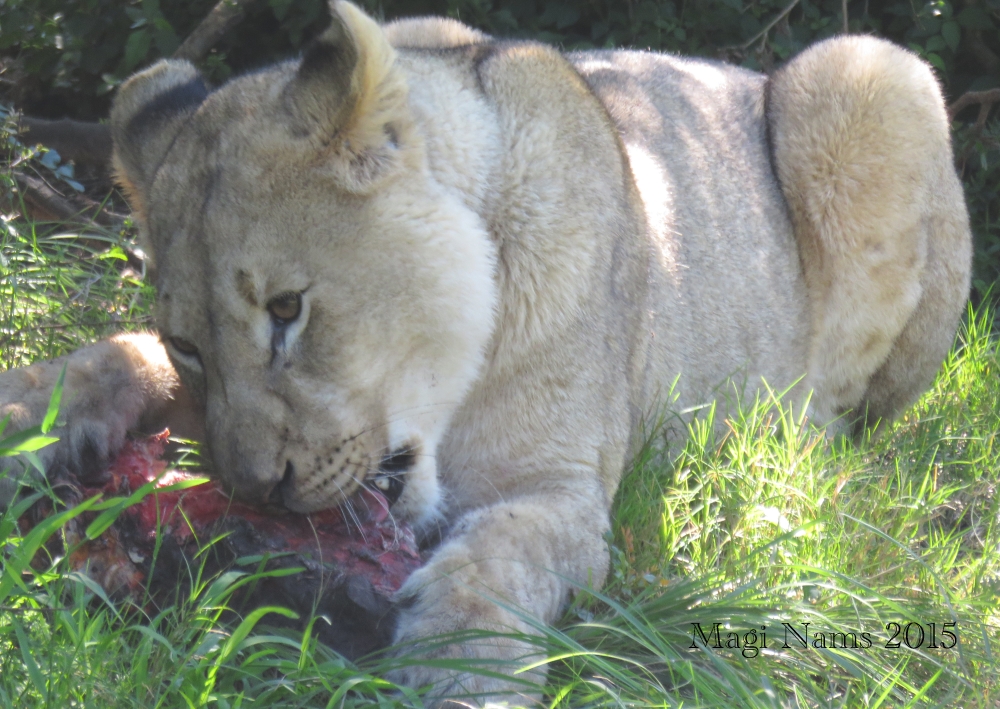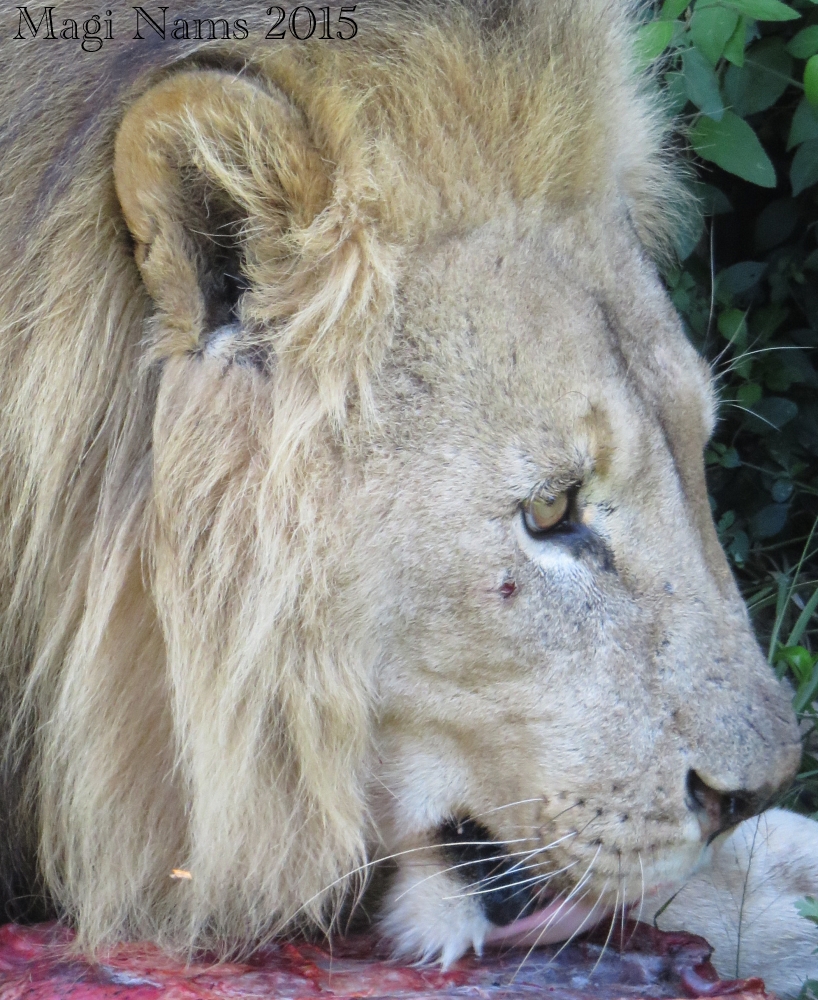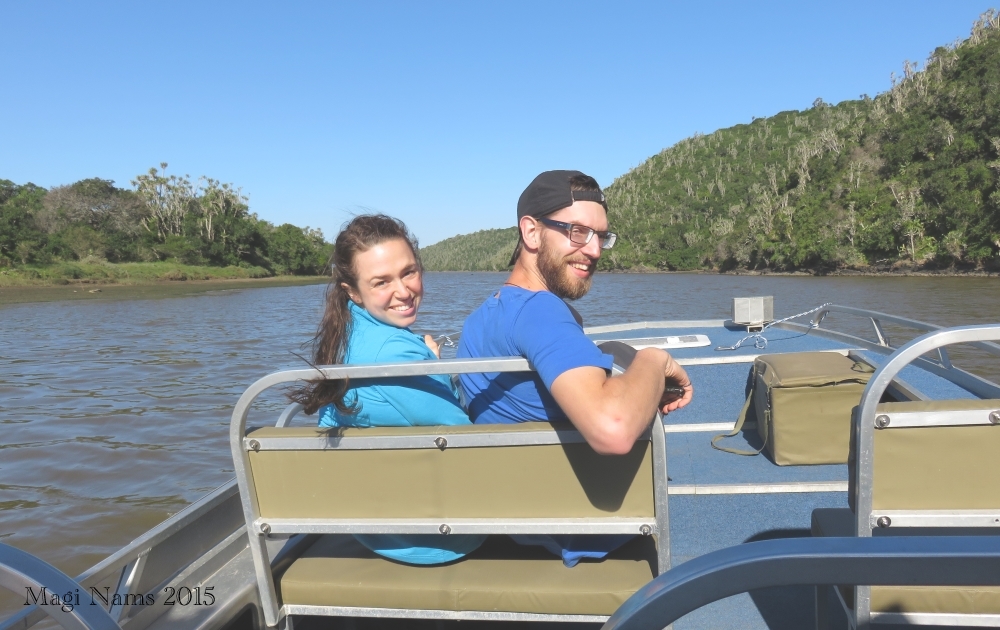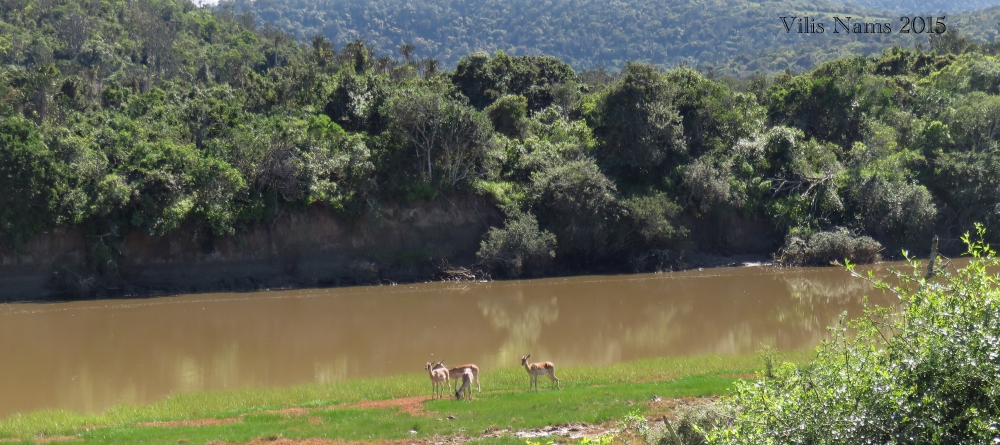Intriguing landscapes, spectacular big game views, fantastic food and an informative and enthusiastic guide made for an unforgettable day on safari in Sibuya Game Reserve.
Recently Vilis and I enjoyed a visit from our son, Dainis, and daughter-in-law, Anna, who had travelled from Halifax to experience a taste of South Africa. On their last weekend here, we went on safari in Sibuya Game Reserve near Kenton-on-Sea. After a week of unsettled weather, including cold temperatures and heavy rain, the Saturday dawned bright and clear and remained that way all day – perfect for the boat tour/game drive/outdoor lunch we’d booked at Sibuya.
Our ranger, Stephan, met us at the reception in Kenton-on-Sea and took us on a forty-minute boat ride upstream from the mouth of Bushmans River, a wide, murky waterway edged with Lower Albany Thicket (dense vegetation dominated by low-growing trees, shrubs and succulent riverine euphorbias that resembled candelabras on sticks). (Tap on photos to enlarge.)
The morning was alive with birdsong and foraging birds. African darters, pied kingfishers, Cape cormorants and white-breasted cormorants fished the river. Great egrets and little egrets hunted in shallow water at the river’s edge. Cattle egrets scurried among cattle grazing the lush river shore grasses and snapped up insects disturbed by the bovines’ movements. Kelp gulls, in their dramatic black-and-white plumage, patrolled sandbars, as did common greenshanks. Stephan told us the area’s migratory shorebirds had recently returned. He also provided bird identification tips and trivia, one example being that the little egret’s long black legs end in yellow feet. Sure enough, we saw those bright yellow feet when a little egret stepped out of the water.
At River Camp, we exited the boat and climbed into an open game viewing vehicle for a three-hour game drive. “What’s your top priority?” Stephan asked. The consensus was “Rhinos!” No sooner had we started out than we spotted groups of white rhinoceroses, also called square-lipped rhinoceroses. White rhinos aren’t native to Eastern Cape, although black rhinos (also called hook-lipped rhinos) are. Stephan told us that when he’d started working at Sibuya Game Reserve, he’d spent five hours just talking to the rhinos so they would become familiar with his voice. (A rhinoceros has very poor eyesight but excellent hearing.) And indeed, when he stopped the vehicle near the rhinos, Stephan greeted some of them by name: Bingo (dominant male), Grumpy Mama (cantankerous female), Binky (baby).
Rhino poaching is a major problem in South African game reserves and parks, so Sibuya’s anti-poaching unit unobtrusively keeps the reserve’s white rhinos under surveillance 24/7. (Check out Saving the Survivors, a South African organization that rescues and provides veterinary care for rhinos maimed by poachers. Warning: graphic images of injuries.) Stephan suggested (and I’ve heard it elsewhere, too) that, if something doesn’t happen to curb the poaching, rhinos may become extinct in the wild within fifteen years. For me, it’s unbelievable and incredibly sad that, with all the brainpower and money that exists in first-world countries, we can’t keep these magnificent animals safe in their native land.
Seated high in the game-viewing vehicle, we also had excellent views of kudu, African elephants, giraffes and nyala and impala (two species of antelope not native to the area). A nyala lamb, its mane raised, stared at something moving in the grass – a big lizard that Stephan identified as a water monitor.
The game drive took us over rugged roads through the thorny thicket and past several small dams (ponds). Stephan pointed out marsh terrapins at the edge of a small pool. From atop a high hill, we looked out over the reserve, lushly green from all the rain Eastern Cape had received during Winter 2015.
Before driving back to River Camp and then boating to Forest Camp for lunch (a delicious smorgasbord), we visited Lion Camp and watched lions feeding in an enclosed area. It was a bit unnerving to sit in an open vehicle only a dozen metres from the big cats and to realize that if one of them attacked, the lion would be inside the vehicle in less than a second. I spoke very softly, moved my arms slowly when taking photographs and took comfort from Stephan’s comment that the lions are fed by catapult and don’t associate vehicles with food. Sibuya Game Reserve is in the process of acquiring more land to expand the lion enclosure so the reserve can introduce prey species into it that will have a sporting chance to evade the lions. At present, any kudu that jump over the fence into the lion enclosure immediately become lion food.
After a leisurely lunch, we rode the river again, back to Kenton-on-Sea, with the wind blowing over us and South African sun beaming warmth onto us after being on safari in Sibuya Game Reserve. If asked to rate the reserve, I would say: wonderful landscapes, spectacular big game views, fantastic food and an informative and enthusiastic guide = five stars. Well done, Sibuya Game Reserve!
My Sibuya bird sightings: streaky-headed seedeater, European starling, speckled mousebird, fork-tailed drongo, white-breasted cormorant, southern boubou, *pied kingfisher, *kelp gull, *Cape cormorant, African darter, *common greenshank, *little egret, cattle egret, green wood-hoopoe, (?) half-collared kingfisher, *great egret, *grey heron, *water thick-knee, black-headed heron, Cape glossy starling, Cape turtle-dove, bokmakierie, dark-capped bulbul, jackal buzzard, crowned hornbill, brown-headed kingfisher, black-shouldered kite, Burchell’s coucal, African fish-eagle, Cape wagtail, *yellow-billed kite, yellow-billed duck. (* life list sighting)
My Sibuya mammal sightings: white rhinoceros, nyala, impala, African elephant, kudu, African lion, giraffe.
My Sibuya reptile sightings: *water monitor, *marsh terrapin.

